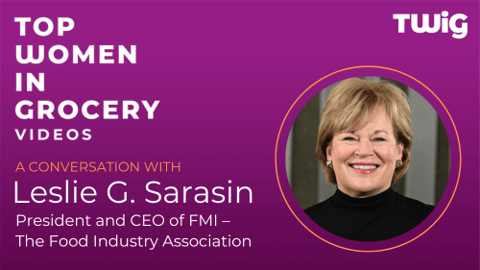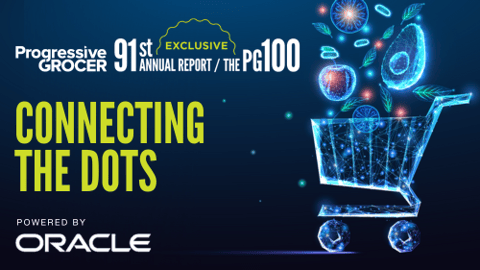Q&A: How Big Lots is Gaining Grocery Customers
Grocery inflation, while ebbing, is still top of mind among consumers and a contributing factor to shifting behaviors. As shoppers gravitate to value-oriented stores and products, they remain engaged in the discovery process of finding and trying new products.
RELATED: Lower-Income Families Going into Debt for Groceries: Report
Columbus, Ohio-based discount chain Big Lots, Inc. is aiming to tap into both trends and shopper habits, offering bargains on a variety of household pantry items. The retailer’s business model of delivering value to customers while helping manufacturers offload overstock and packaging changes is serving the business well, according to Seth Marks, SVP of extreme value sourcing and co-chief merchant. Progressive Grocer recently talked with Marks about how Big Lots is lowering prices at a crucial time and garnering new fans in the process.
Progressive Grocer: Is the recent pricing environment affecting your everyday essentials and grocery staples business?
Seth Marks: Absolutely. Price matters more than ever right now, and we fine-tuned our pricing on hundreds of SKUs and millions of selling units. We took a deep dive, looking at every UPC we had and adjusting prices to be below the market where we could. We feel really good at where we are in the landscape -- we have the highest penetration we’ve seen in years and some of the lowest prices. We have more Extreme Bargains behind it, too.
PG: How are you trying to share your extreme bargain message to shoppers?
SM: We have about 20 million active emails, which is incredible. As we convey value, we've had some of the highest open rates that we’ve been tracking. If even 20% of people open the email, that means we have several million people looking at the value proposition. We are seeing deeper engagement, especially on pantry items.
PG: Are you seeing engagement across a broad shopping base, too?
SM: I’ve been in off-price retail for 30 years and one of the things I love about Big Lots is that the demographics are so diverse. We have consumers from the dollar store-type format and others who are warehouse-type customers, as well as treasure hunt customers.
PG: Based on your role in sourcing, what are some important and interesting products that Big Lots customers can discover?
SM: We have the ability to be agile and work in high-level relationships with manufacturers and brands. There’s so much innovation happening in the industry and not all of it works, so they can sit with excess product, and that is what Big Lots is built on. We’re able to sit down with a CPG and say, ‘What do you have in your supply chain that you want to monetize?’ And we go to market with trained merchants to stretch the opportunity.
That’s a fundamental difference for us compared to the traditional grocery business. We have to stimulate demand by lowering prices on items that have been introduced at too high of a price or that didn’t stick. It’s almost a contrarian way (of merchandising), but we are a strategic partner.
We love newness, so our customer choices with SKU assortments are growing at the highest rate they’ve grown in years. We are pushing the boundaries and limits on bringing in new stuff, especially in grocery and pantry.
PG: As someone who has been in the industry for a while, what do you find exciting right now about what you do?
SM: I’m most passionate about speed and velocity in grocery. During the pandemic, we got more curated, making sure we had on-demand products on the shelf. Here we are, post-crisis with things normalizing, and we see a huge demand for retailers with a scale like us. Many big manufacturers don’t want to deal with multiple outlets and want traceability where end-of-life inventory is being sold, and that’s where Big Lots dominates.
Supply chain is one of our best core competencies. We had a partner whose fiscal year was coming up in 10 days and they had goods that they were going to write off. We were able to pick up 350,000 selling units of an energy drink and put it on the floor – it sold within 10 days. Value always declares itself when the customer knows the price and the value.











